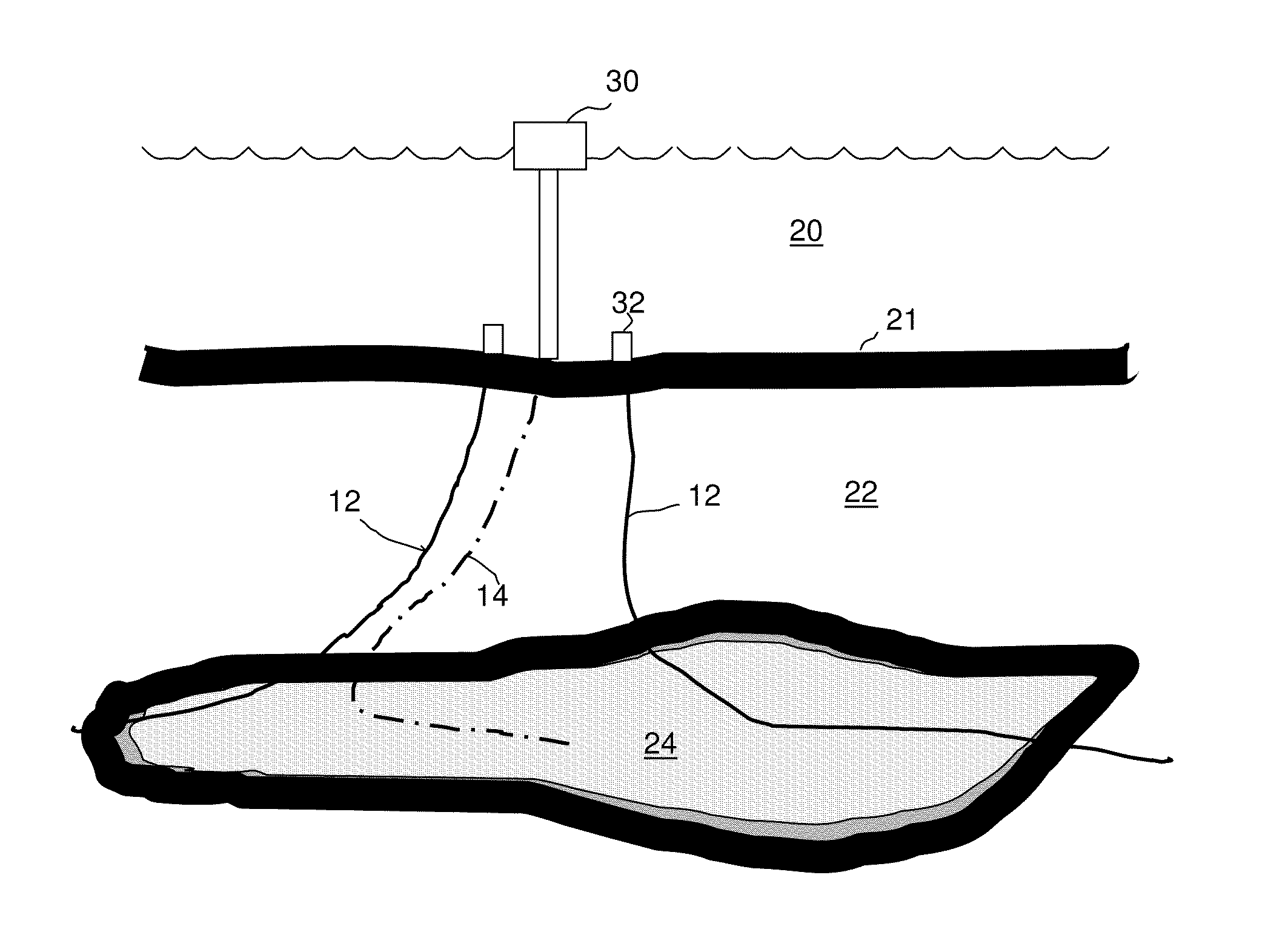Well collision avoidance using distributed acoustic sensing
- Summary
- Abstract
- Description
- Claims
- Application Information
AI Technical Summary
Benefits of technology
Problems solved by technology
Method used
Image
Examples
Embodiment Construction
[0017]Referring initially to FIGS. 1 and 2, an offshore environment 10 includes a plurality of existing wells 12 and a new well 14 (shown in phantom) typically located in some depth of water 20. The wells extend through the seafloor 21 and into a subsurface 22. Subsurface 22 includes a target formation 24. As shown in FIG. 2, each well extends from the seafloor along a desired trajectory. New well 14 will typically be drilled from a platform 30, or the like, as is known.
[0018]In the illustrated system, it is desired to drill well 14 along the trajectory shown, in order to maximize contact with the target formation 24 and therefore maximize production from well 14. Wells 12 are close enough to the desired trajectory of well 14 that there may be a risk that well 14 will intersect the trajectory of one of wells 12 if the trajectory of well 14 is not adequately guided during drilling or if the trajectory of wells 12 are not known with sufficient accuracy or certainty.
[0019]It has been f...
PUM
 Login to View More
Login to View More Abstract
Description
Claims
Application Information
 Login to View More
Login to View More - R&D
- Intellectual Property
- Life Sciences
- Materials
- Tech Scout
- Unparalleled Data Quality
- Higher Quality Content
- 60% Fewer Hallucinations
Browse by: Latest US Patents, China's latest patents, Technical Efficacy Thesaurus, Application Domain, Technology Topic, Popular Technical Reports.
© 2025 PatSnap. All rights reserved.Legal|Privacy policy|Modern Slavery Act Transparency Statement|Sitemap|About US| Contact US: help@patsnap.com


